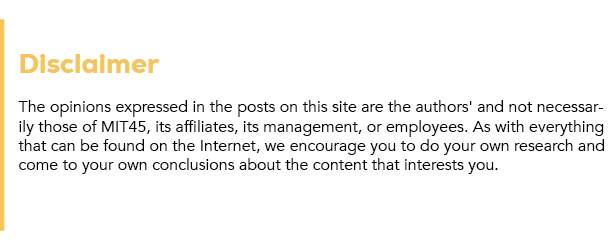New to mindfulness? When beginning, it’s normal to feel like mindfulness is more of a vague concept than a set of concrete habits. Even if you’re skilled at staying mindful, you may enter a season of life where old routines don’t quite do the trick anymore.
Read on for five easy steps to make your mindfulness practice more meaningful (for beginners and avid meditators alike).
Become More Mindful In 5 Simple Steps
Don’t know where to start, or how to re-center, when it comes to mindfulness? These easy steps can be completed in order to help you find your way. Alternatively, you can read through them to find one tip in particular that seems like a good fit to try out!
1. Set Time Aside or “Habit Stack”
If you’re already busy, mindfulness may seem like another item to add to your to-do list. Luckily, many mindfulness practices can be accomplished in a few minutes or expanded to fill an hour (or more).
For example, a simple five-second inhale followed by a five-second exhale costs you only 10 seconds total. However, it can focus your mind before you take a test or step into the doctor’s office to hear about lab results you’ve been anticipating. A yoga session can also employ mindful breathing, but may require you to clear an hour of your day.
Basically, you can make mindfulness work for you and fit into your schedule. It’s up to you how much time you are willing to set aside to be mindful. Remember, it may only require a few moments to become more focused.
If you’re struggling to find time to be mindful, try “habit stacking”—attach mindfulness techniques to routine activities. Re-center while brushing your teeth or washing the dishes. The key is to link a mindfulness technique to something you already do each day, like making the bed.
2. Reduce Distractions
Reducing distractions is a crucial part of staying grounded in your mindfulness practice. Often, distractions can lead to all-consuming thoughts about the past or future. Focusing on your positive feelings in the present moment instead of allowing distractions can enrich your practice.
Mindful eating is a great example. Reducing distractions, like TV or phone screens, can allow you to connect with your body’s hunger cues and really savor the food. Instead of eating mindlessly, you’ll tap into your body’s natural signals telling you when you’re full. You may even notice new flavor profiles or fall in love with your favorite foods all over again!
Keep in mind that “no distractions” doesn’t mean completely quiet! Relaxing music or a meditative experience like a sound bath may help to get you in the right frame of mind.

3. Focus on the Now
Although it’s an oversimplification, the saying “if you are depressed you are living in the past, and if you are anxious you are living in the future” may hold some truth. Mindfulness is thoughtfully living in the now.
“Focusing on the now” may sound more simple than it actually is. One way to better draw your attention to the present moment is to tune into your five senses. Ask yourself:
- What am I hearing now?
- What am I feeling now?
- What am I seeing now?
- What am I smelling now?
- What am I tasting now?
This is a grounding technique that can help to center you when you’re finding it difficult to live in the moment.
4. Come Back to Breathing
No one is perfect at mindfulness, and everyone gets side-tracked or distracted. Breathwork can be an important aspect of mindfulness, and paying attention to your breath can be a powerful way to stay centered during your practice.
Instead of letting a troublesome thought continue to distract you, draw your attention back to your breathing. Since you have to breathe to stay alive, this is a reliable way to re-center.
5. Practice Makes Progress
Even if there’s a mindfulness app or guide that seems to work for everyone else, it may not be a good fit for you. Since it’s a skill, mindfulness requires practice in order for you to see progress. Keep trying different methods and techniques until you find one that works well for your lifestyle and helps you get the results you want.
Start with just a few minutes a day, then work up to longer periods of time or work mindfulness into other activities. If you’re having an especially hard time practicing mindfulness, meeting with a trained teacher, participating in a guided session, or working with a health professional may help.

The Bottom Line on Being More Mindful
Mindfulness is a useful skill, whether you’re going through a stressful time right now or not. Remember, there’s no “right” way to be mindful, just the way that works for you. Trying out helpful tips and tricks can help you re-center and become more in tune with yourself, no matter what this season of life looks like.
References
Mayo Clinic Staff. Mindfulness exercises. Mayoclinic.org. Published October 2022.
Mayo Clinic Staff. Meditation: A simple, fast way to reduce dress. Mayoclinic.org. Published April 2022.
Mental Health Foundation. Mindfulness. Mentalhealth.org.uk. Accessed June 2023.
National Center for Complementary and Integrative Health. Meditation and Mindfulness: What You Need to Know. Nccih.nih.gov. Published June 2023.
National Center for Complementary and Integrative Health. Mind and Body Approaches for Stress and Anxiety. Nccih.nih.gov. Published April 2020.
National Center for Complementary and Integrative Health. 8 Things to Know About Meditation and Mindfulness. Nccih.nih.gov. Published June 2023.
National Institutes of Health. Mindfulness for Your Health. Newsinhealth.nih.gov. Published June 2021.




